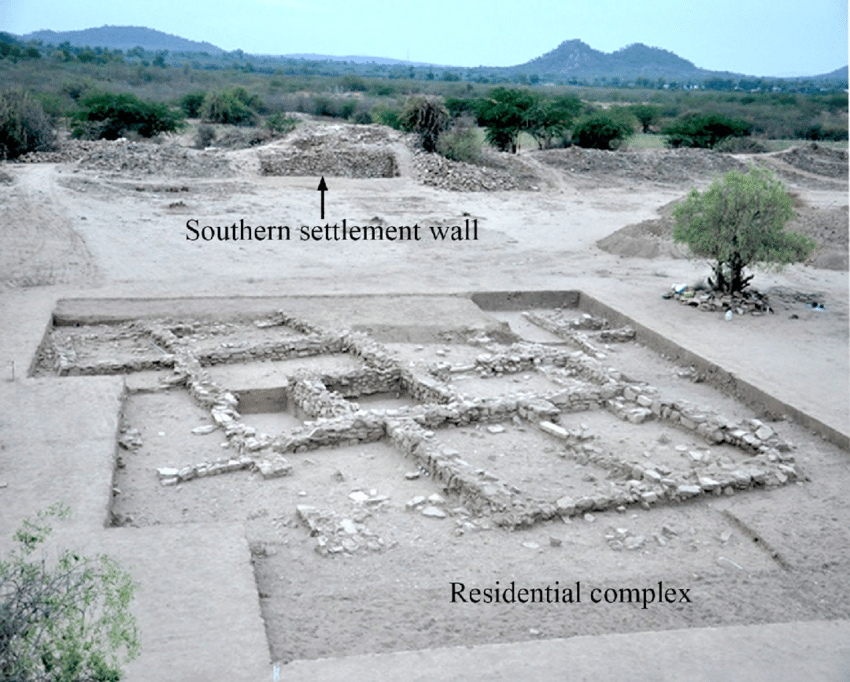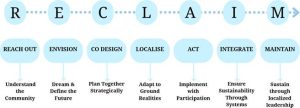A recent study conducted by Deccan College, Symbiosis School for Liberal Arts, and the Archaeological Survey of India (ASI) has identified the Harappan site of Kotada Bhadli in Kutch, Gujarat, as the earliest known caravanserai, revealing evidence of a well-organised trade infrastructure dating back to 2300–1900 BCE.
ABOUT KOTADA BHADLI – HARAPPAN SITE
Kotada Bhadli is an ancient Harappan settlement from the Mature Harappan phase (2300–1900 BCE), recently identified as the earliest known caravanserai — a fortified rest stop for traders and pack animals engaged in long-distance trade.
Location: Situated in the Kutch district of Gujarat, the site occupies a strategic position along inland trade routes that linked major Harappan centres such as Dholavira, Lothal, and Shikarpur.
Nature of the Site: Kotada Bhadli functioned as a rural logistical hub, offering temporary shelter, provisions, and security to Bronze Age merchants and their caravans. It was designed for short-term halts rather than permanent settlement.
Structural Evidence: Excavations uncovered a multi-roomed central complex, fortified walls with bastions, and expansive courtyards likely used for storing goods and housing animals.
These features closely resemble the layout of later-period caravanserais.
Advanced techniques such as ground-penetrating radar, isotopic analysis, and satellite mapping confirmed the site’s architectural plan and functional zoning.
Trade Implications: Kotada Bhadli provides the earliest archaeological evidence of a structured overland trade network within the Harappan civilization.
It served as a vital intermediary station connecting inland and coastal trade centres like Dholavira, Lothal, and Shikarpur — suggesting that the Harappans maintained organized logistical hubs to support long-distance commerce.
Significance: Pushes back the origins of South Asia’s organized trade infrastructure by more than 2,000 years before the emergence of the Silk Route.
Economic Insight:Highlights the Harappans’ sophisticated planning, administrative efficiency, and economic foresight in managing trade and transport networks.
UPSC MAINS PRACTICE QUESTIONS
Q) The discovery of Kotada Bhadli in Kutch redefines our understanding of Harappan trade and mobility. Discuss the significance of this site in the context of the economic and cultural networks of the Mature Harappan phase.
Q)Kotada Bhadli has been described as “the missing logistical link” in Harappan trade networks. Briefly explain its function and significance in the broader context of Harappan commerce and mobility.



